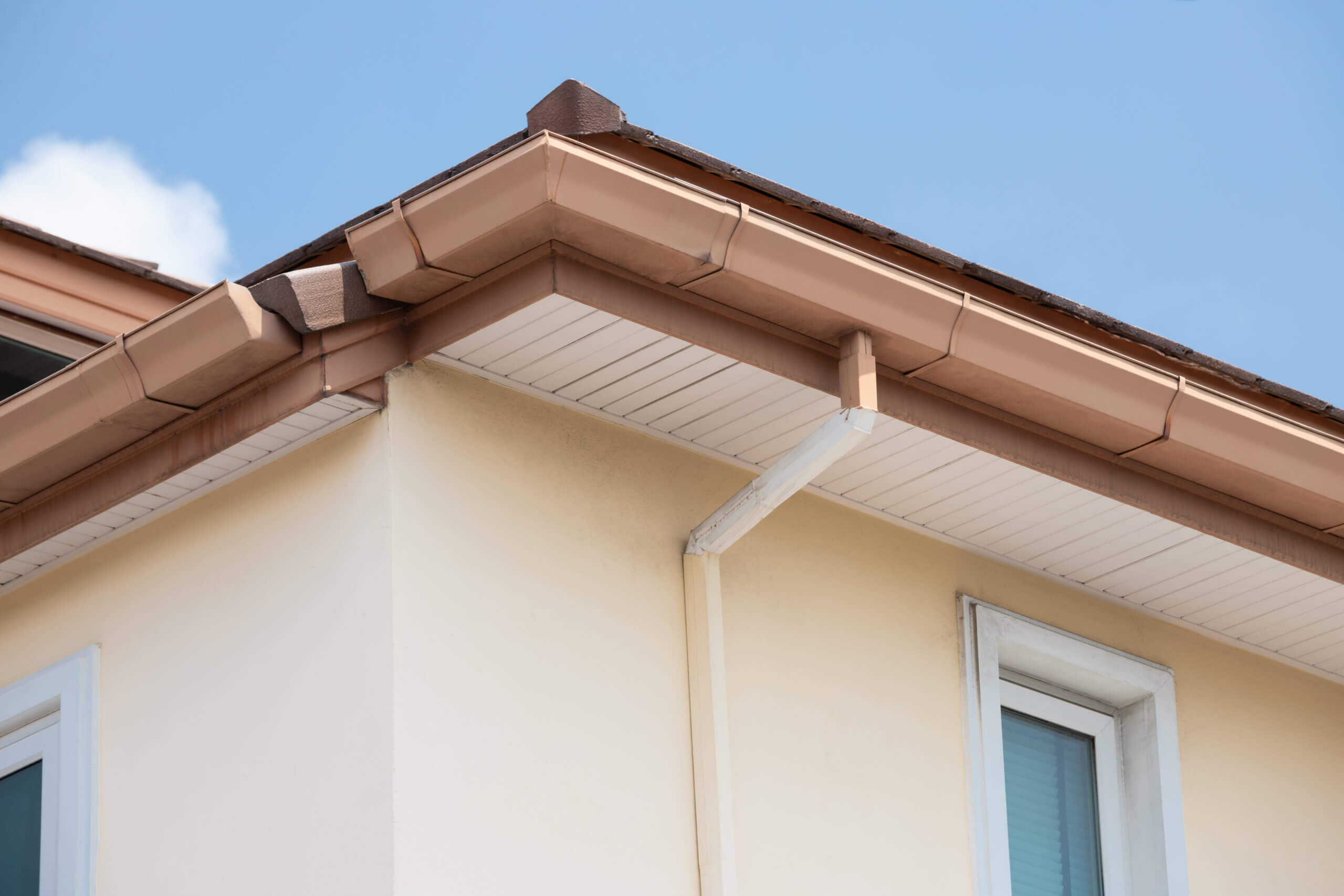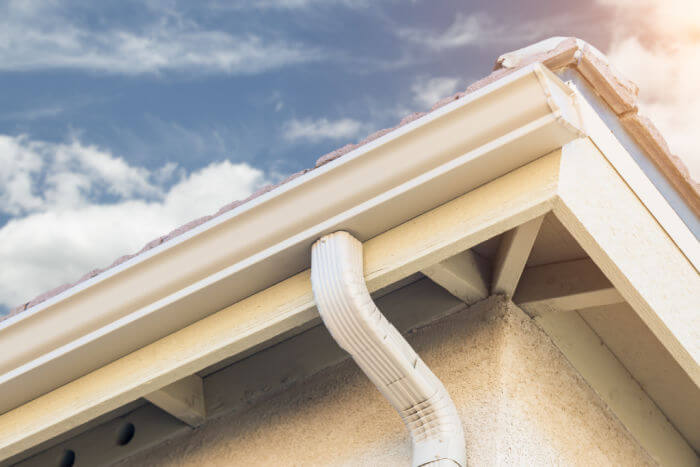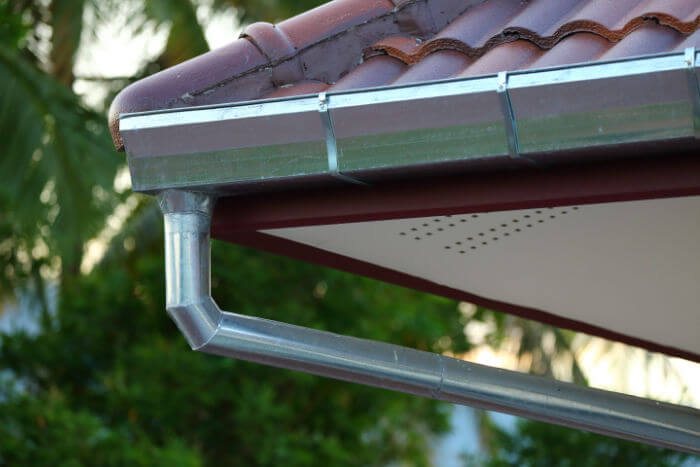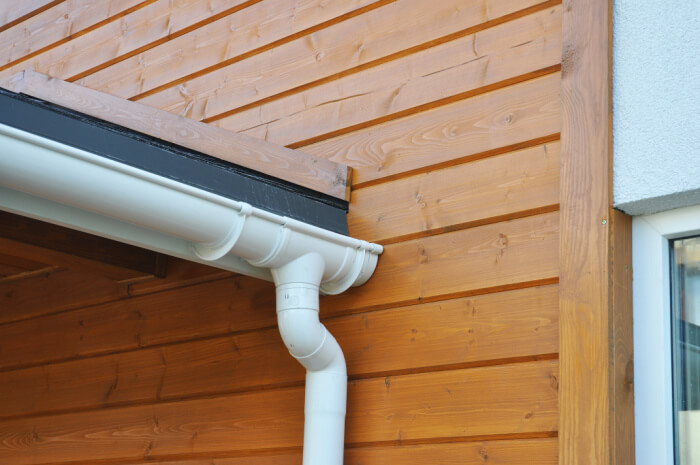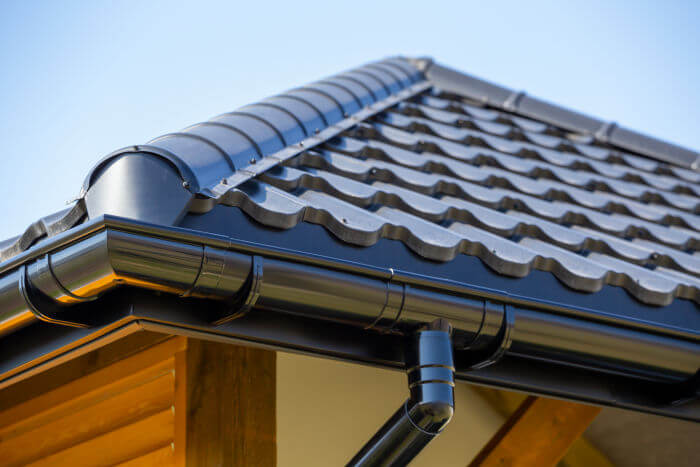Are you doing a gutters project?
Modernize can pair you with three to four pros in your area, so you can compare options and save time and money.
Gutters are necessary in nearly every region in the U.S., especially areas that are prone to heavy rainfall. Modernize created this guide to help homeowners choose the best gutters for heavy rain by region and climate, as well as to better understand which gutter sizes will keep their gutters from overflowing during heavy rain.
Best Gutter Material by Climate and Region
New gutters are an excellent investment since they prevent water damage to siding, basements, windows, and foundations. Rain gutters are usually made from one of the following materials:
About 70 percent of all gutters installed today are made from seamless aluminum because it’s lightweight, durable, and cost-effective compared to other types of gutter materials. Aluminum gutters can last 30 years or more when properly installed and routinely maintained. They are acceptable in all climates in the U.S., even states in the Southeast such as Alabama, Florida, Kentucky, and Georgia that usually experience heavy annual rainfall.
Vinyl gutters, meanwhile, are perfect for milder climates and also are acceptable in regions that see heavy precipitation. However, vinyl might not be the best choice of materials for parts of the country with cold and snowy winters, such as the Rocky Mountain or New England regions, since the vinyl can become brittle over time when exposed to prolonged freezing temperatures.
Homeowners in rugged climates who have concerns about gutter durability may opt for galvanized steel, zinc, or even copper gutters over standard aluminum since those materials provide unmatched strength and longevity.
Best Gutter Style by Climate and Region
Homeowners typically choose between two styles of gutters: Half-round and K-style. Both have their benefits and drawbacks.
Half-round gutters look like a circle that’s been cut in half. This style of gutter is primarily found on older homes with historical architectural styles; however, they also pair well with contemporary architecture.
If you live in a rainy climate, it’s important to know that the shape of half-round gutters transports water faster, and it’s also a breeze to clean. Since they are shallow, though, half-round gutters don’t transport as much water as K-style gutters and may not be the best gutters for heavy rain. You can counter this by opting for a wider gutter – we’ll touch on sizes in the next section.
K-style gutters, on the other hand, are the most widely used gutter style in the U.S. They are naturally more rigid, so they offer greater longevity and durability. The K-style shape is taller than half-round gutters, so they transport greater volumes of water. However, they can be harder to clean.
Style is more of a personal preference. Both styles of gutters work well in harsh weather and milder climates, provided they are appropriately sized.
Find the Right Contractor for Your Gutters Project
Whether you’re ready to begin your project now or need some expert advice, our network of contractors are here to help. With a few simple questions, we’ll find the best local professionals for you
Best Gutter Size by Climate and Region
The common sizes for K-style and half-round gutters are 5-inch and 6-inch, but manufacturers also make 8-inch options. The best gutter size for your home depends on the typical rainfall in your region.
In 2021, the eastern U.S. from east Texas to Maine received 40 to 70 inches of rain, with Gulf Coast states experiencing the highest totals. A standard 5- or 6-inch gutter typically works for this amount, depending on your roof’s pitch and square footage.
The rainy Pacific Northwest saw up to 100 inches of rainfall. While a 5- or 6-inch gutter may work here, you might need 7- or 8-inch gutters to prevent overflow based on your roof’s pitch and size.
The northern Great Plains, upper Midwest, and central Texas experienced the least precipitation. Some areas may even do without gutters, but a 5-inch gutter usually prevents rainwater from pooling against your foundation.
Rainfall totals are a primary factor in choosing the best gutter size by climate and region. Other considerations include your roof’s square footage and pitch.
A licensed gutter installation contractor can help you select the right gutter size for your area and climate.
How to Prep Gutters for Inclement Weather
It’s extremely important to keep your gutters free of debris, since leaves, twigs, dirt, and other detritus will impede the flow of water through the gutter trough.
Gutter guards are a great way to prep your gutters for inclement weather. These screens cover the top of the gutter and keep debris from clogging the gutter through.
If you don’t have gutter guards, you’ll probably want to clean your gutters at least once a year, preferably before the start of your region’s rainy or snowy season. You’ll also want to visually inspect your gutters for any damage and leaks. You can test-run your gutters with water from a hose.
Lastly, make sure the water exiting the downspouts is not pooling and is moving away from your foundation.
Find the Right Contractor for Your Gutters Project
Whether you’re ready to begin your project now or need some expert advice, our network of contractors are here to help. With a few simple questions, we’ll find the best local professionals for you
Reviews from Real Homeowners
Welcome to Homeowner Resources! We are the Modernize blog. Modernize pairs more than 3 million homeowners a year with pre-vetted contractors in their area. This blog started because we believe homeowners should know everything about their homes, from how their HVAC works to which front door colors they might love. On Homeowner Resources, you can find information on every part of your home, right down to how you can negotiate with contractors to get the best price. Here's more about the blog.
Need a contractor? Learn more about how Modernize finds the right pro for you.
